If I talk in terms of Quantum mechanical theory i.e in terms of Planck length, there can be infinite lines of latitude that form circles around the earth.
On the contrary, if I talk in terms of Classical mechanics, there are 180 lines of latitudes. Okay, let me correct myself. There are 181 lines of latitude about which we will talk in the later section.
I am going to explain the five important lines of latitudes that mark specific points on a map of the earth. In other words, these five major lines of latitude mark the divisions between the five principal geographical zones.
What are Lines of Latitude?
We all have at least taken a look at the map or simply the globe of the world. On the map of the world, we see some imaginary circular lines that run from east to west. These lines are nothing but the lines of latitude.
The main purpose of these circles of latitude is to help us to navigate around the globe. One can also say that we need them to fix our position with respect to the surface of the earth. Additionally, they are generally measured in degrees.
You may have noticed that I used the word “imaginary”. Obviously, you would be wondering why? Well, I used the word imaginary circles of latitude simply because in reality there are none.
In other words, these lines are nothing but the virtual creations of humans just like we have created virtual International boundary lines between two countries. Ohh boy!!! I think I am going somewhere else.
Not to mention, we even use these circles of latitude to define the international boundary between two countries. Moving ahead, We often call the lines of latitude the parallels of latitude. WHY?
Because all these circular lines are parallel to each other. In other words, these lines of latitude never intersect with each other.
Editor’s Choice: What are Lines of Longitude? Definition & Diagrams
How Many Line of Latitudes are There?
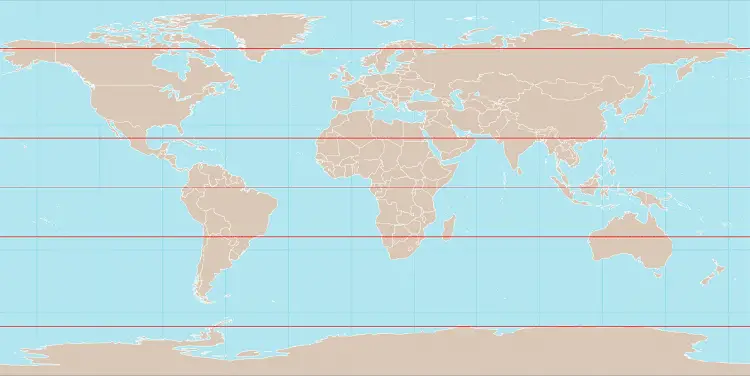
As you already know that all the parallels of latitude are usually measured in degrees. Well, speaking of degrees, the very first circles of latitude start from the equator which is at 0 degrees. Later, from the equator, these circles expand to the north and south poles of the earth.
Both the north pole and south pole are at 90 degrees with respect to the equator. So, when you count all of the lines of the latitude above and below the equator. What you get are 180 parallels.
And, when you add the equator i.e at 0 degrees, you get 181 degrees of latitudes. To put it differently, (90 for equator to the north pole) + (90 for equator to south pole) + (1 for equator itself) is equal to 181 circles of latitudes. Additionally, the distance between each degree of latitude is about 69 miles (110 kilometers).
Five Important Lines of Latitude
As you know that in total we have 181 parallels around the globe. Don’t forget, it’s classically. I mean, if I talk in terms of quantum mechanically, we would have infinite numbers of parallels around the globe.
Moving ahead, out of 181 parallels, I am only going to explain the top five most important lines of latitude. Therefore, stick with me. Let’s dive right in!!!
Arctic Circle
The very first one in my list of five major circles of latitude is the Arctic Circle that currently runs at 66.56 degrees north of the equator.
During June solstice i.e the summer solstice in the northern hemisphere, the arctic circle marks the southernmost area of the earth where the sun is above the horizon for 24 continuous hours.
Similarly, during the December solstice i.e winter solstice in the northern hemisphere, the arctic circle marks the southernmost area of the earth where the sun is below the horizon for 24 continuous hours.

The region above the arctic circle including the north pole, collectively, we call it the Arctic. In addition, the arctic circle is approximately 16,000 km long and roughly covers 4% of the earth’s surface.
Must Read: What is Prime Meridian? – Definition, Map, History & Importance
Geographically, there are 8 countries that pass through the arctic. These are Canada, Norway, Sweden, Russia, United States, Greenland, Finland, and Iceland.
Tropic of Cancer
The next one in my list of top 5 major lines of latitude is the Tropic of Cancer that currently runs at 23.43 degrees north of the equator.
During June solstice i.e summer solstice in the northern hemisphere, the tropic of cancer marks the northernmost area of the earth at which the sun can be directly overhead.

In other words, on the eve of the June solstice, not only the sun enters the tropic of cancer, but it also remains as high as it can be in the northern sky. Geographically, the tropic of cancer passes through 17 countries.
These are Algeria, Mexico, the Bahamas, Egypt, Myanmar, Mauritania, Mali, Nigeria, Libya, Chad, Saudi Arabia, United Arab Emirates, Western Sahara, Oman, India, Bangladesh, and China.
Equator
Located at 0 degrees latitude, the Equator divides the earth into the northern and southern hemispheres. In fact, the higher the value of the degree of latitude from the equator, the closer you are to the north or south pole.
On the eve of Equinox (either March Equinox or September Equinox), the sun is directly above the equator. In other words, the earth’s axis of rotation becomes perpendicular to the sunshine. Hence, marking the equal day and equal night above and below the equator.
Check out: March Equinox 2021 – First Day of Fall in Southern Hemisphere
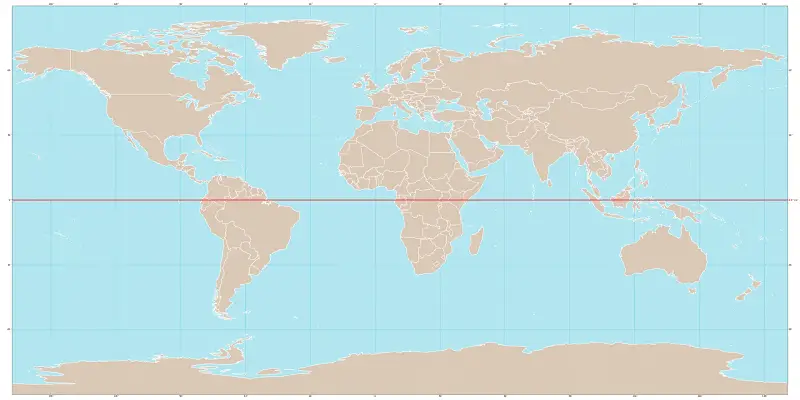
In total, there are 13 countries that pass through the equator. These are Ecuador, Colombia, Brazil, Sao Tome & Principe, Gabon, Republic of the Congo, the Democratic Republic of the Congo, Uganda, Kenya, Somalia, Maldives, Indonesia, and Kiribati.
Editor’s Choice: March Equinox 2021 – First Day of Spring in Northern Hemisphere
In addition, Equator is the only line of latitude which is also a great circle. In other words, Equator is the only parallel that is centered on the center of the earth. On the other hand, all the other parallels are centered on the earth’s axis of rotation.
Tropic of Capricorn
The tropic of Capricorn currently runs at 23.43 degrees south of the equator. During December solstice i.e summer solstice in the southern hemisphere, the tropic of Capricorn marks the southernmost area of the earth at which the sun can be directly overhead.
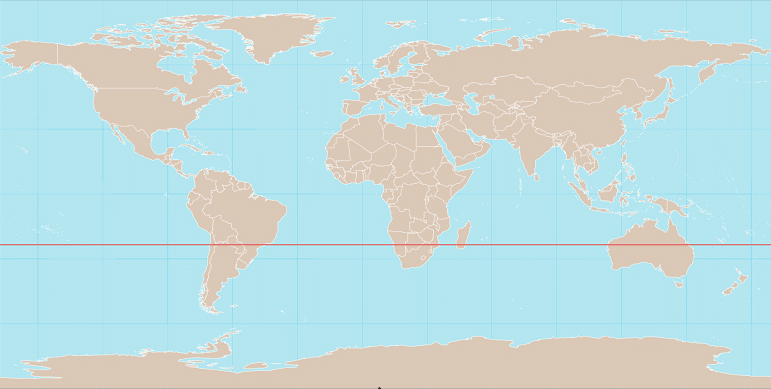
In other words, on the eve of the December solstice, not only the sun enters the tropic of Capricorn, but it also remains as high as it can be in the southern sky. Geographically, the tropic of Capricorn passes through 10 countries.
These are South Africa, Argentina, Paraguay, Namibia, Botswana, Chile, Mozambique, Madagascar, Brazil, and Australia.
Antarctic Circle
The Antarctic Circle is the southernmost major circle of latitude that currently runs at 66.56 degrees south of the equator.
During June solstice i.e winter solstice in the southern hemisphere, the Antarctic Circle marks the northernmost area of the earth where the sun is below the horizon for 24 continuous hours.
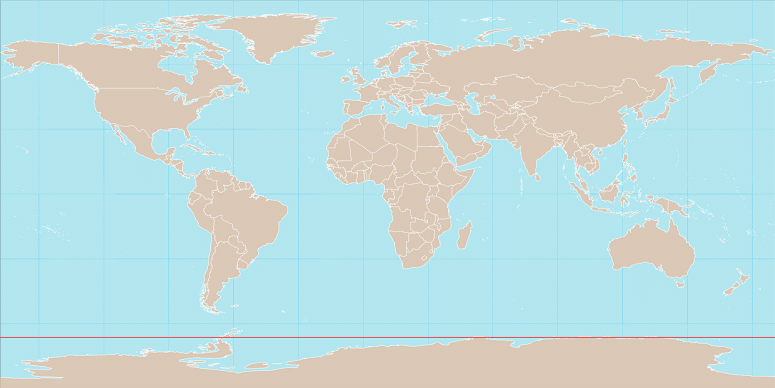
Similarly, during the December solstice i.e the summer solstice in the southern hemisphere, the Antarctic Circle marks the northernmost area of the earth where the sun is above the horizon for 24 continuous hours.
The region above the antarctic circle including the south pole, we call it is the Antarctic. In addition, the Antarctic circle is approximately 16,000 km long and roughly covers 4% of the earth’s surface. Geographically, the antarctic circle passes through only one landmass i.e Antarctica.
That’s it for this post. If you like this article, share it if you like, like it if you share it. You can also find us on Mix, Twitter, Pinterest, and Facebook. Hey man, If you have come this far, do give us feedback in the comment section. It would make my day. You can also make a donation. Your donations will help us to run our website and serve you BETTER. Cheers!!!
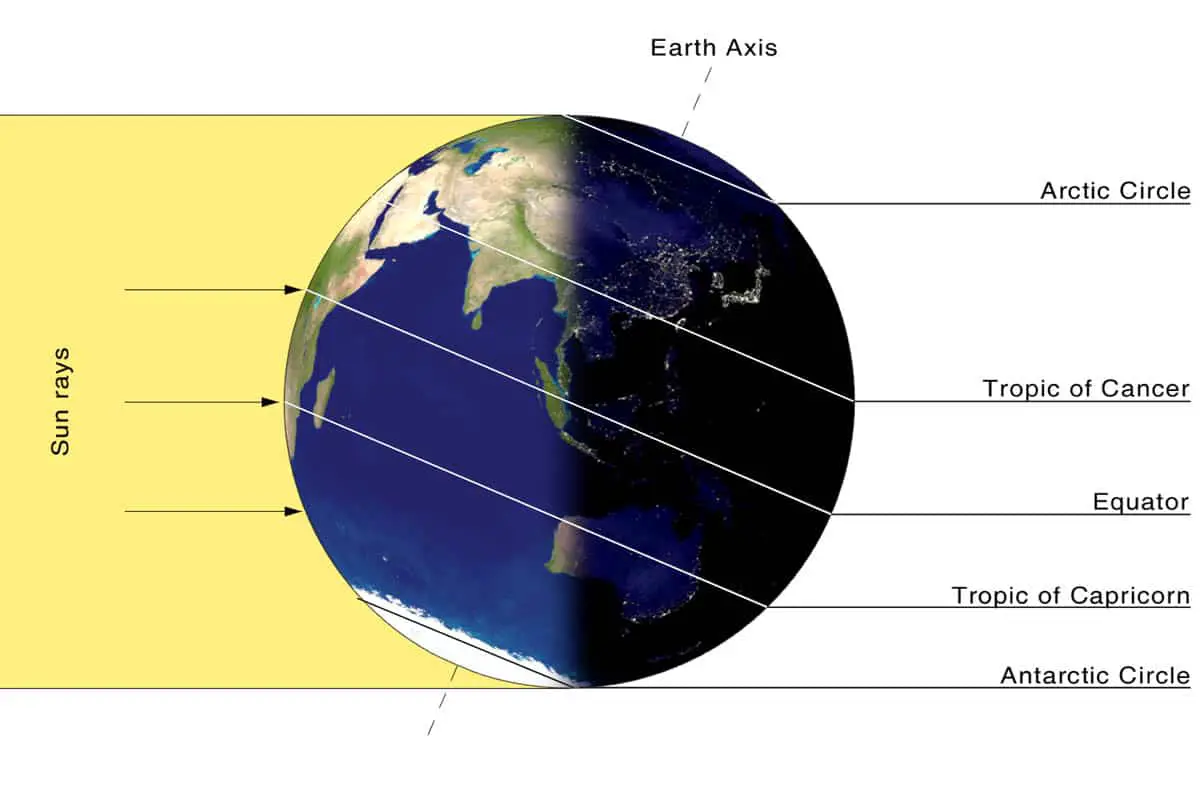
Great article. Keep writing such kind of information on your blog. I’m really impressed by it.
Thanx Tiffiny, keep visiting us…!!!
Terrific post!!!
Thnx Lenna, Keep Visiting us…!!!